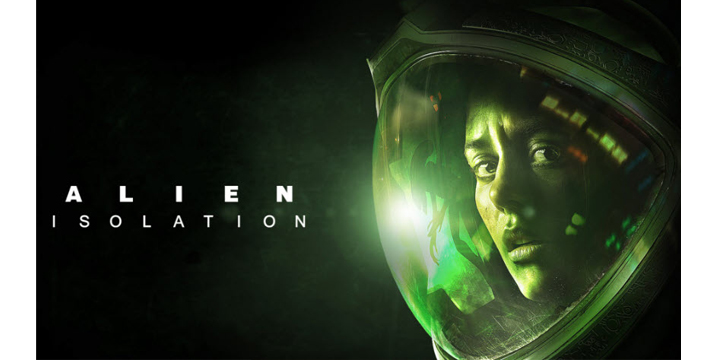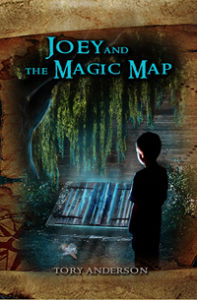I started Alien Isolation in a February. Fifty hours of gameplay later I finished it the following August. It took fifty hours of creeping through the dark rooms of an abandoned, city-sized, space station orbiting a gas giant in deep space. Even though it’s abandoned, it’s not empty. Groups of humans—workers who are supposed to be shutting the station down—have been deserted there by their employer. They have devolved into small groups of people paranoid and quick to shoot anyone they don’t know. There are the androids—the “working joes”—who are supposed to take care of menial tasks and not hurt anyone but who have inexplicably started hunting humans. Then, worst of all, there are the alien creatures who hunt all other living creatures and are effectively unstoppable. Understandably, the tension in each hour of gameplay is exhausting.
In the beginning you are able to roam the station freely and safely. You don’t meet another living creature. Instead, you see relics from the recent past of all the life that used to be there. The station was built to be an exotic destination for vacation. The view of the gas giant is magnificent. The station had amenities for recreation. On-station transportation makes getting around easy. There are science centers aimed at technological advancement. It has a fully equipped medical center and communications control. Remnants of the people who vacationed and worked there are seen everywhere in left-behind books, magazines, food wrappers, office toys, posters, and digital logs found on lonely computer terminals. It’s a bit sad to sense the life that once filled the station, now dark and empty—nearly.
Soon enough you meet desperate humans who instinctively try to kill you. Eventually you get the means to fight back, but you quickly learn that eluding is better. Then you run into androids who look remarkably like members of the Blue Man Group, but are much more violent. Luckily for the player they aren’t designed to kill humans. Still, they are very capable of killing if they get their hands on you. And they aren’t exactly easy to kill.
Then you meet the Alien. You have no ability to defeat the alien; you can only avoid it . . . maybe. The alien will kill any other living thing on the station, but unfortunately, it seems to be hunting you, personally. It is never far away. Never be in a hurry and run. Running makes too much noise and you can’t run fast enough once the alien hears you. Walking is iffy. It’s best to crawl. Sure, it’s slow, but it’s also quiet. If some paranoid human shoots at you, you better hide quickly because the Alien is surely coming to the noise.
The storyline unfolds slowly as you complete objectives. You are Amanda Ripley, daughter of the famous Ellen Ripley, star of all the movies. Your starting objective is to find the flight recorder taken from your mother’s ship. This is straight from the movies. You want to learn the mystery of your mother’s life and death. Soon enough your objectives are changed to just surviving and finding a way to get off the station alive. There is a touching scene, however, where you find a recorded message from your mother, voice acted by Sigourney Weaver (Ellen Ripley) herself. But at this point Sevastopol Station is falling into the gas giant and you only have one hope of surviving—get to the Torrens, a ship that has come back looking for you. Of course, there are leveled up androids and nests of aliens between you and your goal.
This game was, to put it simply, hard. Halfway through I changed it to easy mode, but it didn’t seem to get any easier. I was at the business end of the alien’s double jaws or saw its iron tail coming through my chest more times than I cared to count. Evasion wasn’t a skill I had developed in any game before Alien Isolation. It was foreign to me. It took me forever to learn that you aren’t supposed to evade the Alien forever. You are supposed to hurry along to complete your objective, evading the Alien as you go. I don’t know if it was a weakness in the game or just in me, but I had a hard time navigating the station to the next objective. I would find myself wandering halls and rooms hopelessly lost while the Alien hunted me down again and again. Eventually, after reading walk-throughs (which were only a little helpful) and watching a video or two, I started grasping the concept of hurrying along. However, it took me until the last couple of missions (out of 18) to become more confident in navigation. This was a big deal, but it came so late. At the end of the game I remember thinking, “Now I’m ready to play the game!”
Another thing I didn’t fully realize until I had nearly completed the game was how the game allows for quite a bit of creativity in how you achieve your goals. As you navigate the station trying to elude humans, androids, and aliens, you collect parts that enable you to build various tools—things like: smoke bombs, EMP grenades, flash/bang grenades, noise makers, Molotov cocktails, flares, and med kits. You have to learn to use the right tool at the right time, but usage isn’t hard coded. You may do something no other player has tried before. Humans often shoot at you when they see you which in turn brings on the Alien. I learned that smoke grenades keeps the humans from seeing and shooting at me. The stun baton was great against individual androids (the un-upgraded ones). When androids start coming at you in groups you better have some EMP grenades. If they are upgraded androids you have to be nimble and have nerves of steel as you wait for the bolt gun to charge. I learned that shotgun to face will work, but it takes multiple shots as they close in. And it’s likely you won’t have enough ammo. The flame thrower? Androids don’t seem to know when they are on fire. They are just as happy to kill you while in flames as not.
When it comes to the alien, you can’t kill it. If it sees you (often it hears you first) it comes and kills you. For the first part of the game it seemed to me that that the only hope against the hunting alien was not to be seen. Other than a flare (which I didn’t understand how to use then) you had no effective tools to survive an encounter. Later in the game you obtain the flame thrower. What a thrill! You still can’t kill the alien, but if you see it coming in time you can drive it away with a blast or two . . . until you run out of fuel. I quickly learned to depend on that beautiful flamethrower. No longer did running into the Alien mean an automatic death although, unfortunately, there were still plenty of deaths—that alien is fast.
The question is, what happens when you run out of flame thrower fuel? It’s not just a matter of the Alien being unimpeded in tearing you to pieces when it sees you. There are points in the game where you have to enter a room to complete a mandatory objective, but entering the room automatically triggers the alien coming out of a vent in the same room. Without flame thrower fuel it seemed I had no way of surviving the alien and completing the objective. My game progress was over. Or was it?
I had read somewhere that the Alien is strangely attracted to flares. I had been collecting flares all along but had no use for them. Now, in a pickle, I thought I would try something new. Looking through the doorway where I needed to go, I lit a flare and threw it across the room. I stepped through the doorway and took a step or two in to trigger the Alien. When I heard the Alien coming out of the vent opening (you learn the sound well) I quickly backed out of the room so the alien wouldn’t see me. I was able to peek into the room and watch the alien run to the flare and study it. Eventually it tired of the flare, looked around the room, then exited up through the vent. I was able to go into the room and restart the generator. What a feeling. My respect for Alien Isolation rose tremendously. It allows for creativity and ingenuity.
When I watched video replays of sections of the game I noticed that the skilled player always had loads of flame thrower fuel. I, being a noob to the game, was perennially short of fuel. In desperation I turned to Molotov cocktails. When I ran into the alien, and it rushed me, I threw that cocktail like I meant it! It hit the Alien. Yay! But since it was so close to me the flames engulfed me and killed me. Boo! I thought Molotovs were a bust until after that gaming session I read in my stats that I was one of .04% who had driven off an Alien with a Molotov cocktail. Except for burning myself up, I had succeeded. This started me thinking.
Near the end of the game I learned that I would be finding myself in an alien nest where aliens lived in droves. I thought I would need every ounce of flamethrower fuel I could find. In the scenes before the nest I had to get through a burning room where two aliens hunted. I was determined to save fuel by using Molotov cocktails to deter the aliens. I died ten times trying to perfect the technique but I finally succeeded in making it past the two aliens alive without using a flamethrower. Later, I did use the flame thrower in the nest, mainly against the pesky, sneaking face huggers, but I didn’t need nearly as much fuel as I thought.
Rather skillfully escaping the alien nest, I found myself outside the station going through the process to blow the tether bolts holding the Torrens before we fall together into the gas giant. It was alarming to see several aliens gleefully leaping toward me. Even the vacuum of space doesn’t kill them. I narrowly escaped to the Torrens and watched Sevastopol Station fall into the gas giant and explode. Presumably all the aliens went with it. It was satisfying to see. The game went on a bit more which led to an ending that at first left me saying, “What? No!” But as I sat through the credit sequence and pondered I realized it was a perfect ending for an Alien game. The more I think about it the more I love it.
These books by Tory Anderson are now available on Amazon in Kindle and paperback format:





